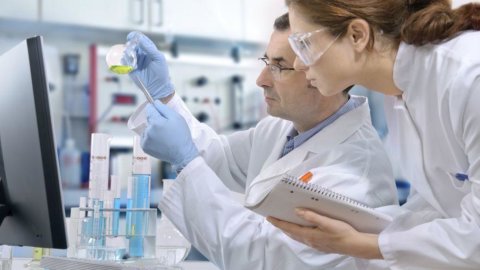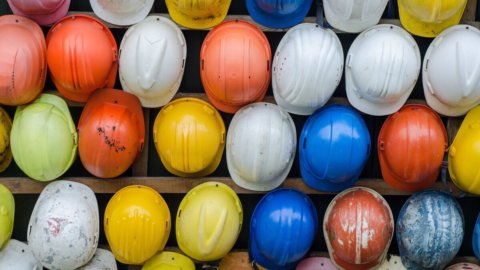Italy has a growth problem. Europe has it too. On average for the first three months of 2012, industrial production in Italy was more than 20 percentage points lower than the cyclical peak of the first quarter of 2008. In France, industrial production remains ten points below pre-crisis levels. In Germany the production gap stops at three per cent. In Italy, as well as in France and Germany, signs of a slowdown come from the export trend recorded in March.
Between 2007 and 2011, Italy lost three positions in the world ranking of manufacturing producing countries, dropping from fifth to eighth place. France also falls three places, from sixth to ninth. Germany holds on to fifth place, but losing half the lead it had in 2007 over its first pursuer, Korea. Without growth there is no stability. It is only by launching a recovery process as soon as possible that the return objectives set by the new fiscal rules of the "Six Pack" and the "Fiscal Compact" can be considered economically and socially sustainable.
Similarly, economic growth represents the necessary correlation for the medium-term sustainability of the progressive application of the new system of banking rules that goes by the name of Basel 3. Getting back to growth seems very difficult, in countries like Italy where the needs of recovery and rebalancing are frequently interpreted as alternatives, and not complementary, to those of recovery. Getting back to growth appears even more difficult when the human, social and economic damages of external "shocks" such as the severe earthquake are added to the problems of the recession and the financial crisis which affected the provinces of Modena and Ferrara.
Yet, the tragic combination of earthquake and recession offers more than a starting point to test the possibilities of a recovery. A recovery that is solid and sustainable, which starts from small and medium-sized enterprises, their industriousness and their spirit of innovation and which finds support in the effective capacity of systems such as that of public administrations and credit to be facilitators of growth.
The tragedy of the earthquake made the existence of the biomedical district of Mirandola known to the general public. The district reality has represented in Italy an original approach to the problem of combining the small size of the enterprise with the critical size necessary to compete on foreign markets by exploiting the valorisation of the share capital. Born as a mainly spontaneous phenomenon of association between small and medium-sized enterprises, the Italian district reality was the subject of the first regulatory intervention in 1991.
This and subsequent legislative interventions have left ample room for the regions to define and identify the districts present in the area, and to implement financing and development policies. There are 15 regions that have proceeded with the formal identification of district areas, but the overall number of districts does not end with those thus defined, above all if we consider that some regions with a strong district vocation have not provided for their formal identification; this is the case, for example, of Emilia Romagna, a region which has favored the initiative of local actors, who propose themselves as a district system and agree development plans, collaboration and so on with the region.
The biomedical district of Mirandola is therefore not included among the district areas defined by the aforementioned legislation. Born thanks to the commercial intuition of imagining a development of disposables in the medical field, and grown following the two guidelines "machinery" and "disposable components", the Mirandola district, also known as the "biomedical valley", was the most important and renowned of its kind in the world until the XNUMXs, together with that of Minneapolis which, however, was operating only in the electro-medical machinery sector.
According to data from the ASIA archive of Istat at the end of 2009, the latest data available, the sector had 245 companies, mostly (80%) micro (less than 10 employees) and small (13,8%). Overall, more than 4.000 people were employed in active companies, down by 19% compared to the previous year. The Mirandola district represents an example of fertile coexistence between multinationals and micro-enterprises, research laboratories and artisan shops, and one of the national examples of successful businesses born in the garage of a house. The main activity of the companies in the district (about a third) is the production of medical devices for diagnosis and therapy, while 10% manufacture orthopedic prostheses and 20% highly innovative electromedical devices.
The biomedical sector of Mirandola is one of the few national manufacturing companies, district and non-district, which had gone through the last recession with relatively positive numbers both in terms of production and exports, which fell in 2009 by 8,2% against approximately 21% overall. During 2011, biomedical production in the province of Modena grew by 1,8%, reflecting the decline recorded in the last months of the year, while turnover rose by 2,7% y/y.
The trend on foreign markets was better: between 2010 and 2011 exports grew by 5,3%, a growth rate which was confirmed in the first two months of this year (+5,7%). a figure in line with the overall figure for the same period (+5,9%). In 2011 sustained growth rates were recorded above all in the sales of direct biomedical products in Germany and China (+10,6 and +9,7% respectively). The EU countries as a whole are no longer the main market for Italian biomedical products, even if it recovers shares compared to previous years (49% of the total in 2011 from 46% in 2010), and the United States is the main outlet market (13,9%), followed by France (12,8%) and from Germany (8,5%); China, with a share of 2%, still has ample room for improvement. The earthquake that hit Emilia Romagna in recent weeks has practically immobilized the entire biomedical district of Mirandola.
Preliminary estimates speak of damages exceeding 500 million euros. The risk is that of seeing a flight of companies abroad also in Mirandola. The risk of relocation must be energetically countered by encouraging the restoration of production lines as soon as possible and, above all, by seizing the stimulus from the tragedy of the earthquake to improve the territory's ability to attract Italian and foreign investments. Mirandola can become a laboratory to counter that trend in which investment outflows from Italy largely exceed capital inflows into our country. In the first quarter of this year – the data are taken from the latest Statistical Supplement of the Bank of Italy – direct investments abroad from Italy amounted to 8,3 billion euro. Foreign direct investments in Italy stopped at 830 million euros.
To reverse these trends and reduce the gap between incoming and outgoing capital, it is up to governments to create a more investment-friendly environment. Simplifying procedures. Selectively reducing wedges. In the case of the biomedical sector, reducing the previous debts of the PAs to district companies (estimated in the order of hundreds of millions of euros) according to amounts and times better than those resulting from the recent provisions. The biomedical is a pearl that should not be lost. This is especially true for the innovativeness of the district, in a general scenario where Italy is still far behind in terms of research and development. R&D expenditures are 1,3 percent of GDP in Italy, 2,3 percent in France and 2,8 percent in Germany. To oversee and increase the innovation capacity of the Italian biomedical sector, a useful tool can be that of the new network contracts (Law 30 July 2010, No. 22).
The business network helps the competitiveness, international visibility and bankability of small businesses. It is an important tool that Emilian companies, including those in the medical sector, have begun to appreciate. In mid-May, more than ten per cent of the Italian companies participating in at least one network contract (189 out of 1.767) were located in Emilia Romagna. Italy must start growing again, soon. To do this requires choices. We also need awareness of the centrality of sectors such as biomedical, pharmaceutical and food in the consolidation of a "new" made in Italy that will occupy interesting niches in the strategic panorama of global industry. Between 2007 and 2011, exports in quantity decreased by 3,5 percent for total Italian manufacturing, while they increased by 15,5 percent for food and 27,7 percent for pharmaceutical products. Between 2008 and 2011, the value of Mirandola's biomedical exports grew from 4.516 to 4.996 million euros, with a recovery of over twenty percentage points from the low of 2009. Innovative companies, sectoral opportunities, "growth-friendly" networks and territories are needed for recovery. With Mirandola, beyond the earthquake, we need to start again.





